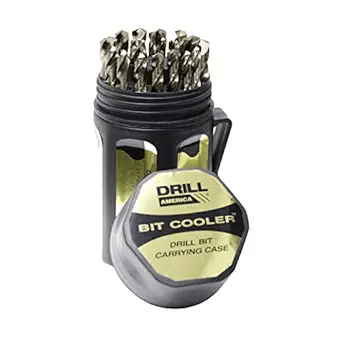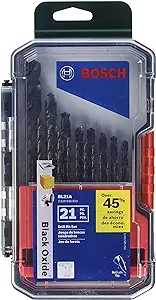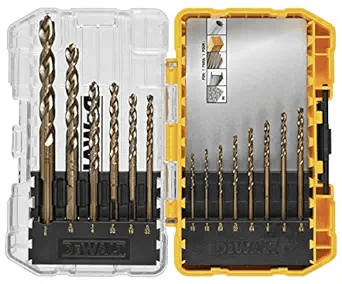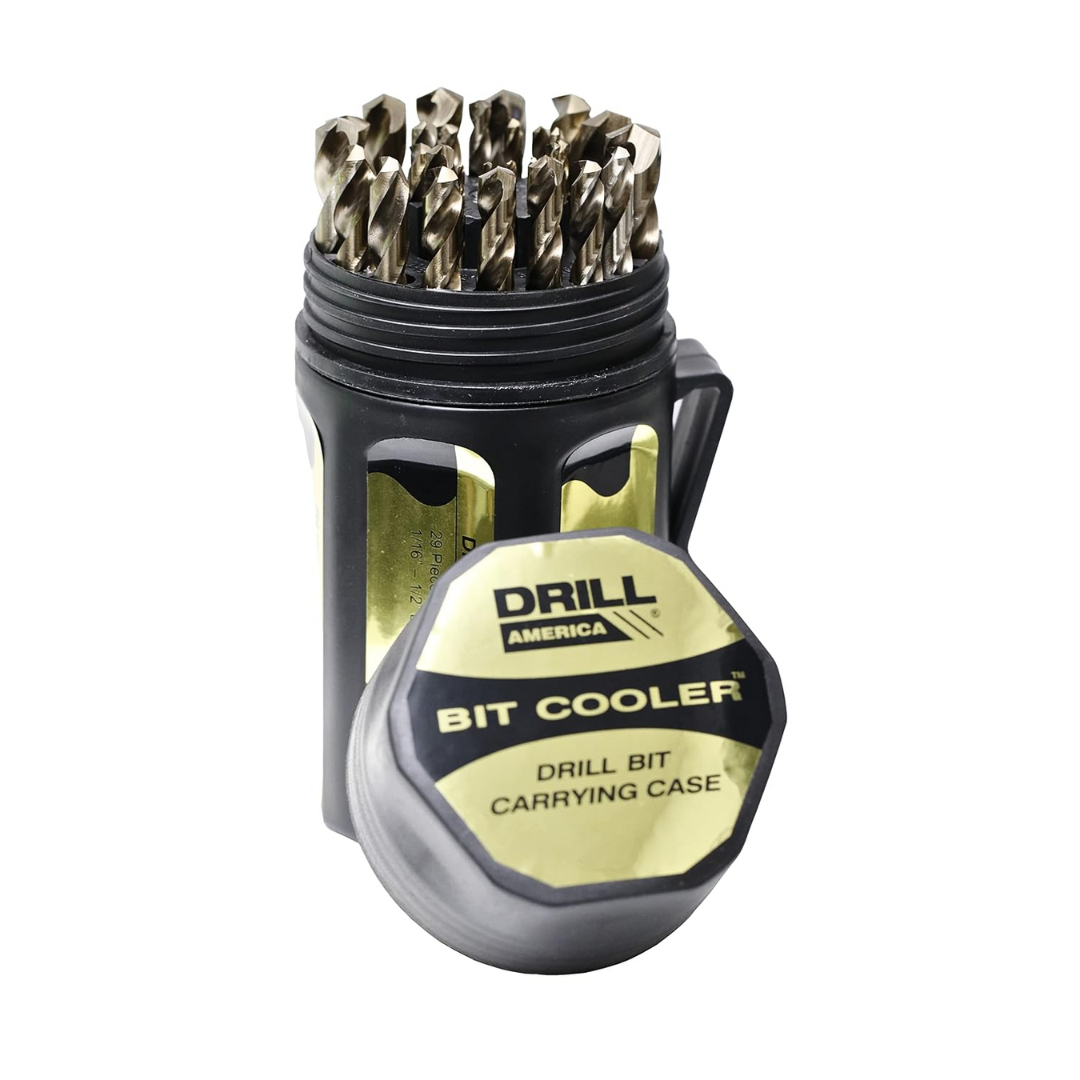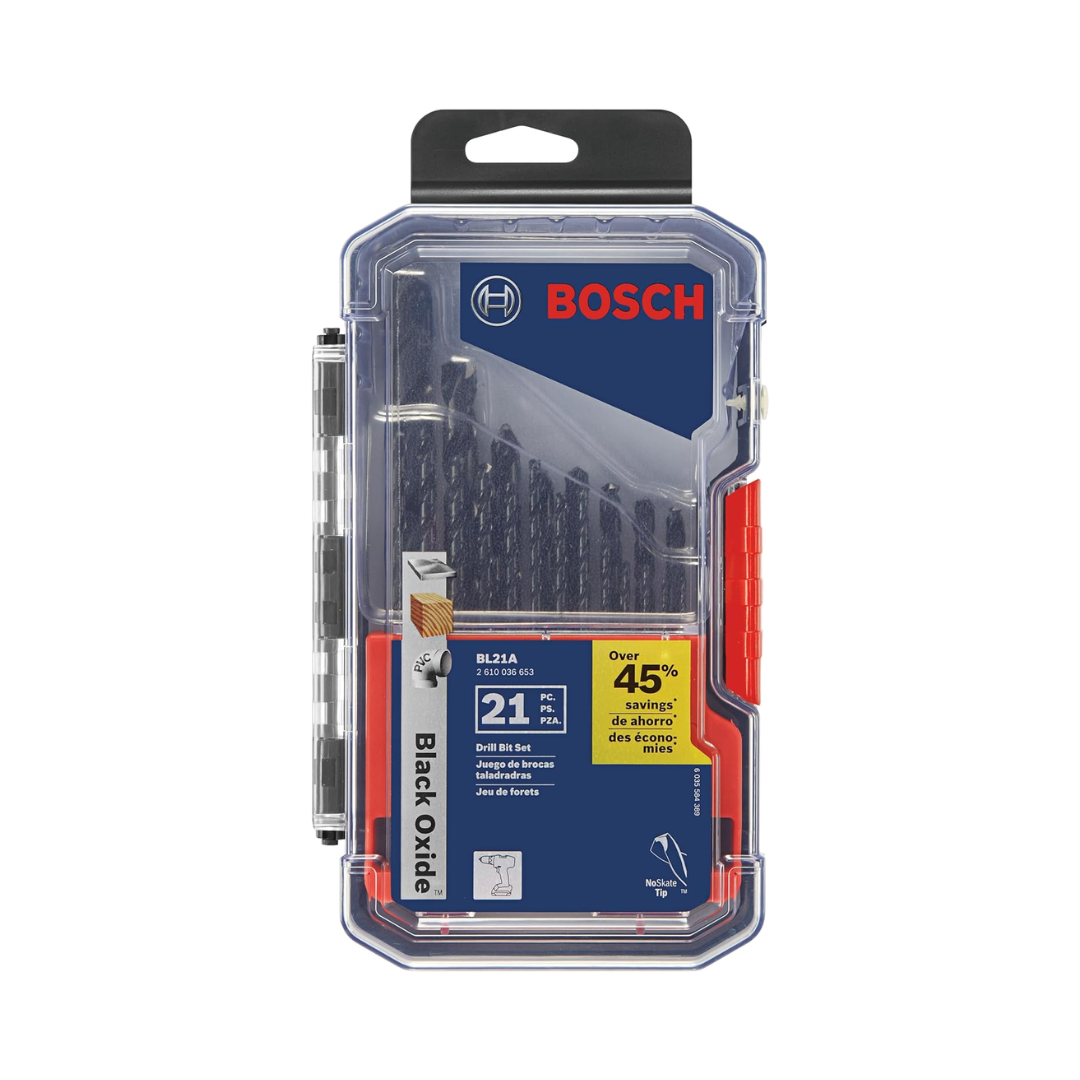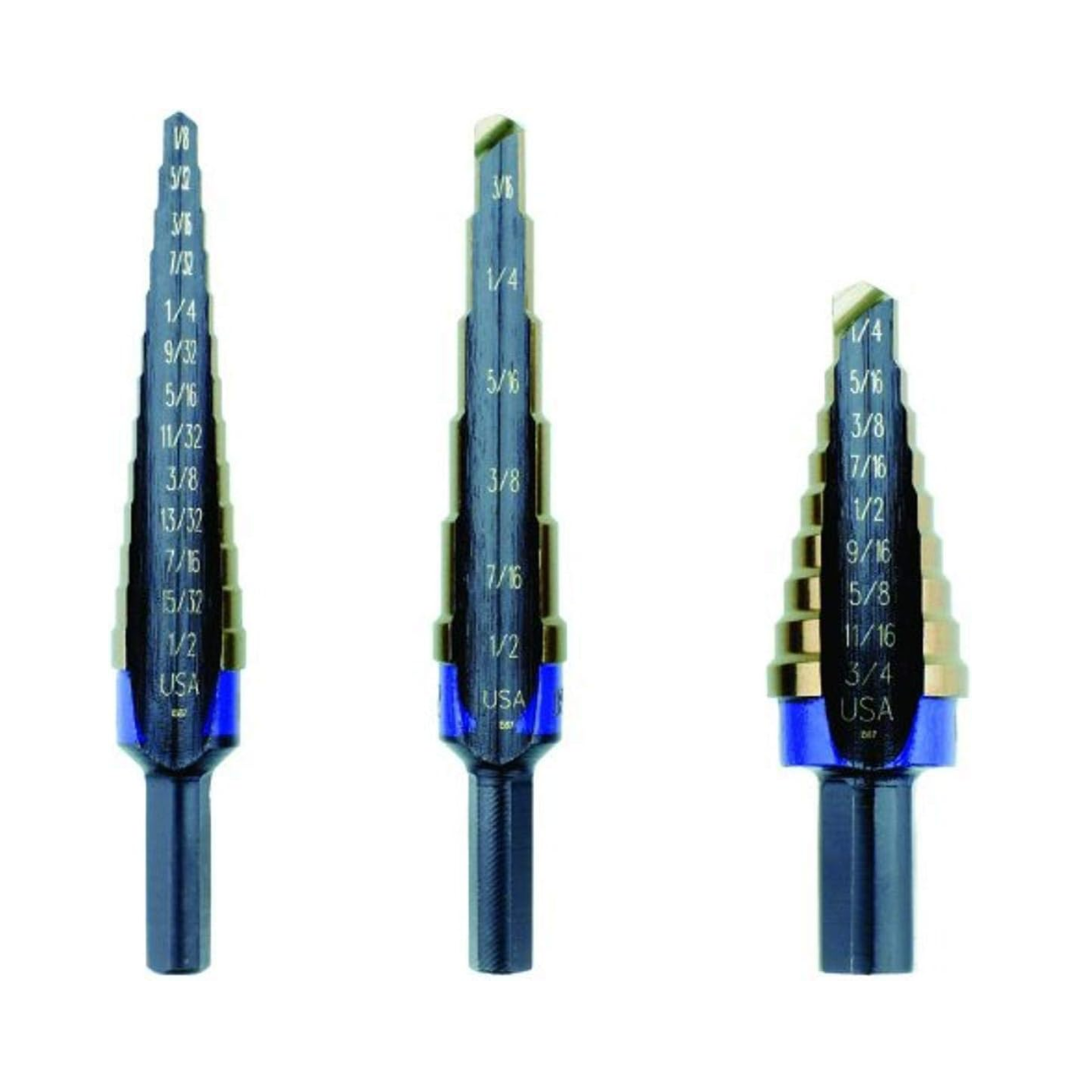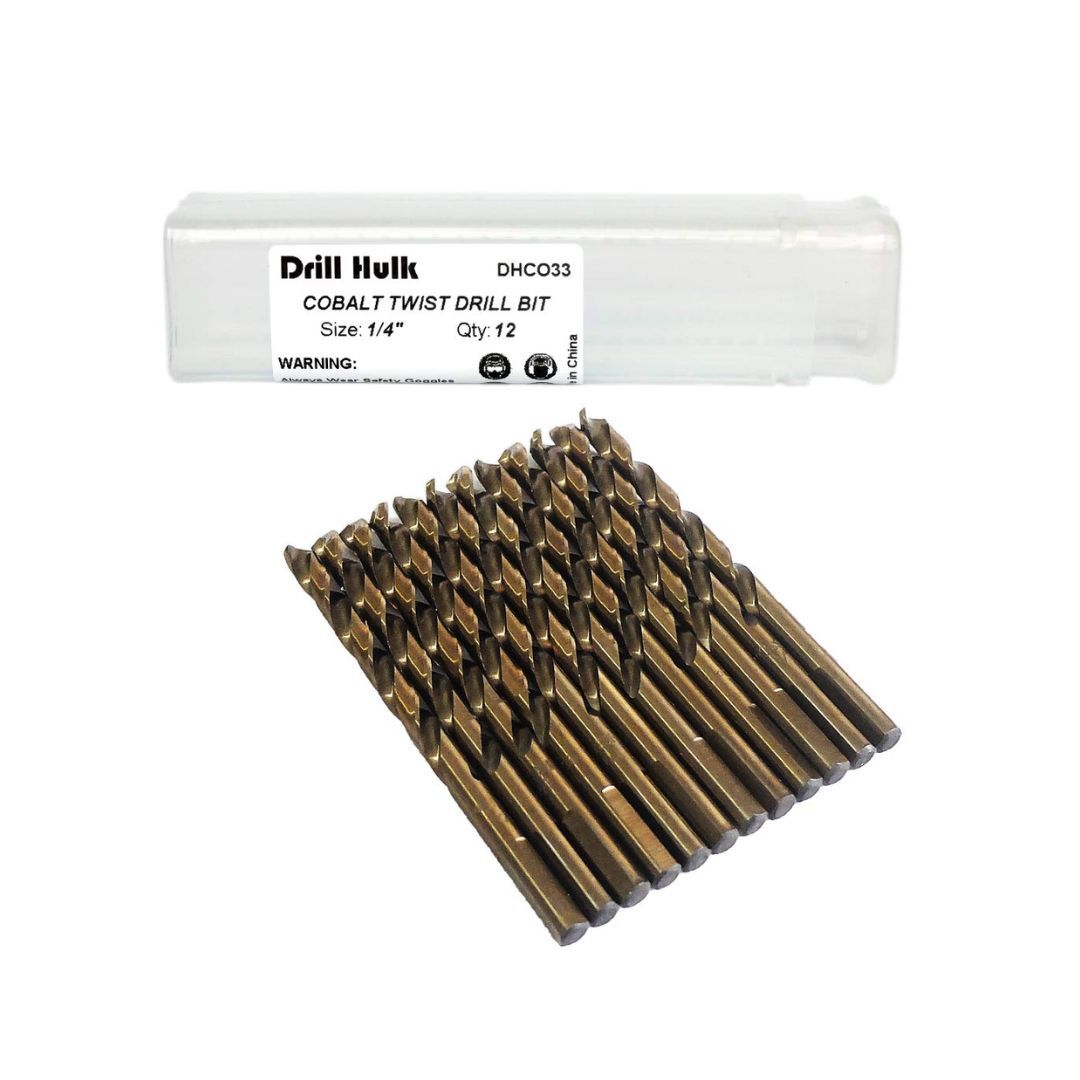We may be compensated if you purchase through links on our website. Our team is committed to delivering honest, objective, and independent reviews on home products and services.
Metal is difficult to work with if you don’t have the proper tools. When drilling for a metalworking project, specific drill bits are required to ensure you can fully cut through the material. While some drill bits that work on wood and plastic also work with soft metals, thicker metals require different drill bit types. To help you determine the best drill bit for your project, we put together this list of the best drill bits for metal on the market.
Best Drill Bits for Metal: Our Top 5 Picks
- Best for Hardened Steel: Drill America D/A29J-CO-PC Cobalt Drill Bit Set
- Most Versatile: BOSCH BL21A Black Oxide Metal Drill Bit Set
- Best for Stainless Steel: DEWALT Cobalt Alloy Steel Drill Bit Set
- Best Step Drill Bits: IRWIN Step Drill Bit Set
- Best Jobber-Length Bits: Drill Hulk 1/4-Inch Cobalt Steel Jobber Set
Compare Top Drill Bits for Metal
| Product | Pieces | Material | Shank Type | Cutting Angle String |
|---|---|---|---|---|
| Drill America D/A29J-CO-PC Cobalt Drill Bit Set | 29 | Cobalt | Round | 135 degrees |
| BOSCH BL21A Black Oxide Metal Drill Bit Set | 21 | HSS | 3-Flat | 118 degrees and 135 degrees |
| DEWALT Cobalt Alloy Steel Drill Bit Set | 14 | Cobalt | Straight | Not listed |
| IRWIN Step Drill Bit Set | 3 | Cobalt | Straight | 135 degrees |
| Drill Hulk 1/4-Inch Cobalt Steel Jobber Set | 12 | Cobalt | 3-Flat | 135 degrees |
| Product | Pieces | Material | Shank Type | Cutting Angle String |
Best for Hardened Steel
Good for: Those who need to drill through hardened steel or various difficult metals.
What Customers Are Saying
We found that customers who gave these drill bits a positive review liked that they were durable and made from high-quality materials. Others were impressed with the round case. On the other hand, customers with less positive things to say about these drill bits found that they dulled quicker than expected. Others said that the markings were difficult to understand.
Most Versatile
Good for: Those who want a versatile drill bit set they can use for multiple projects and material types.
What Customers Are Saying
Customers who liked this product were impressed with its wide range of bits, its ability to work on hard metals, such as titanium, and its longevity and durability. However, our team found some customers who said the bits were not well labeled and others who said the bits dulled quickly.
Best for Stainless Steel
Good for: Those working on stainless steel projects that want to drill through the metal quickly and efficiently.
What Customers Are Saying
Our team noted that customers who liked these bits were particularly impressed with their sharpness, which allowed them to slice through tough metals. Others also liked the high-quality, durable material, requiring minimal pressure on the drill. On the other hand, some customers found the packaging difficult to open, and others said the bits were overly fragile and broke easily.
Best Step Drill Bits
Good for: Those working with soft metals who want a clearly marked bit that’s easy to use and starts fast.
What Customers Are Saying
This set was popular among reviewers for its durable design, clear markings, and ability to work on various metals. On the other hand, some customers felt these bits were duller than expected, while others were disappointed that these bits did not come in a plastic case.
Best Jobber-Length Bits
Good for: DIYers who only need a specific drill bit size for hard metals, such as stainless steel.
What Customers Are Saying
Customers who gave this product a positive review liked that it was durable and long lasting. They also complimented these bits’ excellent value and ability to work on stainless steel. However, we also noted some customers who said that these bits broke when they applied pressure, and others claimed that they seemed duller than other bits they had used.
What To Know Before Buying Drill Bits for Metal
When buying a drill bit specifically for metal, first ensure that that bit is designed for metal and won’t heat up and snap when drilled through the material. Take the following additional factors into consideration before deciding which bit is best for your DIY project:
Material
The drill bit’s material will affect its performance. Metal drill bits typically come in one of the following materials:
High-Speed Steel (HSS)
High-speed steel (HSS) drill bits are hardwearing and heat resistant. They are strong, durable, and safe to operate at high speeds. However, HSS bits must be sharpened over time, as they can dull quickly.
Carbide
Carbide bits are made for drilling nonferrous metals (metals that do not contain iron) and do not work on ferrous metals. They typically cost more than HSS drill bits but are particularly wear resistant. Carbide bits are heat resistant, work at fast drilling speeds, and are more accurate than HSS bits.
Cobalt
Cobalt drill bits are a good choice for ferrous metals. They have particularly high heat resistance and are harder than HSS bits. Cobalt bits are stronger than other bit types and can cut through even the toughest metals. However, they run at a high price point and are more brittle than other materials.
Compatibility
Not all drill bits work on metal, and not all metal drill bits work on every type of metal. For example, if you’re operating on hardened steel, ensure the drill bit is strong enough to drill through that material. Some drill bits work best for aluminum, stainless steel, or rebar.
Coating
Many metal drill bits come with coatings like titanium nitride (TiN) or black oxide. These coatings help reduce friction, increase heat resistance, and extend the life of the drill bit.
Shank Design
Metal drill bits typically have rounded, no-spin, or hex shanks. When determining what shank design to get, look for one that fits your drill’s chuck size. No-spin bits have a fluted shank design and help keep the bit secure when drilling, while hex shanks have six sides that help keep the bit steady.
Point Angle
The point angle refers to the angle formed between the two cutting edges of the drill bit where they meet at the tip. Most drill bits for metal have point angles of either 118 or 135 degrees. Bits with a 118-degree point angle are best for softer metals, while 135-degree bits work best for harder metals. Some drill bit sets come with both 118-degree bits and 135-degree bits.
Tips for Drilling Holes in Metal
Drilling holes in metal can be a challenge for the inexperienced DIYer. However, if you follow some basic tips and use the proper drill bits, you should get the hang of it quickly. Here are the top things to remember when drilling holes in metal.
Wear Proper Safety Equipment
You should always wear eye protection, such as safety glasses, when drilling, regardless of material. Additionally, avoid wearing loose clothing, and consider also wearing ear protection.
Ensure You’re Using the Proper Drill Bit and Speed
As discussed in this review, ensuring you’re using the right drill bit when drilling metal is essential. Attempting to drill through metal without an HSS, cobalt, or carbide bit will cause it to snap and cause injuries. Additionally, you should consult a speed chart to ensure you’re not drilling too fast or too slow, which could shorten the life of the bit.
Lubricate the Bits
While some bits come pre-lubricated, you should always double-check to ensure they have lubricant or cutting fluid before using it. Lubrication dissipates heat, reduces friction, and prolongs the life of the bit.
Make Sure the Metal and Bit Are Secure
Before drilling, ensure the piece of metal you’re using is fully secure in a clamp. For the drill, use a center punch to create a small indentation where you want to drill, which will help the drill stay on target and prevent wandering.
Use Proper Technique
When you turn the drill on, make sure it is fully secure in your hand and apply consistent but gentle pressure. Excessive force could cause the bit to break or could cause overheating. A slow and steady feed will prevent the bit from binding or catching.
FAQ About Drill Bits for Metal
Do twist bits work with metal?
Twist bits, or HHS bits, are a common drill bit type that can work with various materials, including metal, wood, and plastic. However, finding an HSS or cobalt twist bit is essential, as they are designed to withstand the heat generated during metal drilling.
What’s the best way to sharpen drill bits?
Sharpening drill bits will help extend their lives and is particularly important when attempting to drill through hard metals. Use a bench grinder or drill bit sharpener to sharpen the cutting edges when they begin to dull.
Do drill bits need to be cleaned?
While you don’t necessarily need to clean drill bits after every use, doing so will help keep them in the best possible condition. To clean a drill bit, wipe away excess residue and rub cutting fluid on it before putting it away.
How do you determine the right size drill bit for DIY projects?
When figuring out what size drill bit to use, determine the hole size and the type of metal you are working with. From there, consult a drill bit sizing chart to match your hole size with the proper bit.
Our Methodology
This Old House has empowered homeowners and DIY-ers for more than four decades with top-notch home improvement advice in the form of television programs, print media, and digital content. Our team focuses on creating in-depth product and service review content. To date, we’ve published over 1,600 reviews on products in the home space, including power tools, outdoor equipment, major appliances, kitchen gadgets, electronics, and more that focus on product quality and helpfulness to our readers.
To provide our readers with the best recommendations possible, we rely on several key sources of information to help guide our selection process.
Initial Research: Our research process began by generating a list of drill bits for metal with a significant number of verified buyer reviews and an average customer review rating of 4–5 stars. We looked at positive and negative reviews alike, focusing on information from both satisfied and critical buyers.
Expert Insights: To complement our in-house expertise, our team looked at reviews and videos from trusted publications and independent testers, spoke with subject matter experts, and drew insights from reader contributions.
Final Product Selection: We then began fine-tuning our list by replacing older models with the latest versions and eliminating any discontinued models. From there, we compared each model’s feature set to create a final short list, selecting the best-in-class options for various buyers, budgets, and scenarios.
Once we conclude our research, we craft a comprehensive, user-friendly article of recommended products and additional information to help our readers make the right purchase.
Questions or Comments?
To share feedback or ask a question about this article, send a note to our team at reviews@thisoldhousereviews.com.
